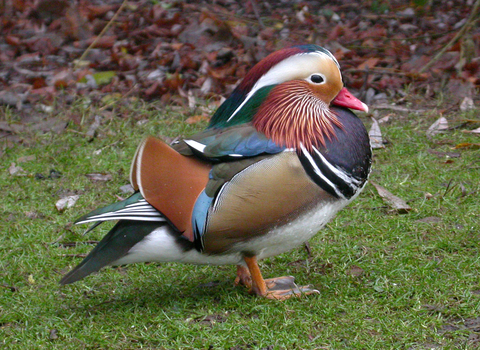©Gillian Day

Drake Mandarin duck ©Dave Appleton
Mandarin duck
A pretty and distinctive little waterbird, the mandarin duck was introduced from the Far East as its name suggests. Oddly for a duck, it nests in trees, sometimes high above the water.
Scientific name
Aix galericulataWhen to see
January to DecemberSpecies information
Category
Statistics
Length: 45cmWingspan: 71cm
Weight: 520-630g
Average lifespan: est. 6 years
Introduced, non-native species.
